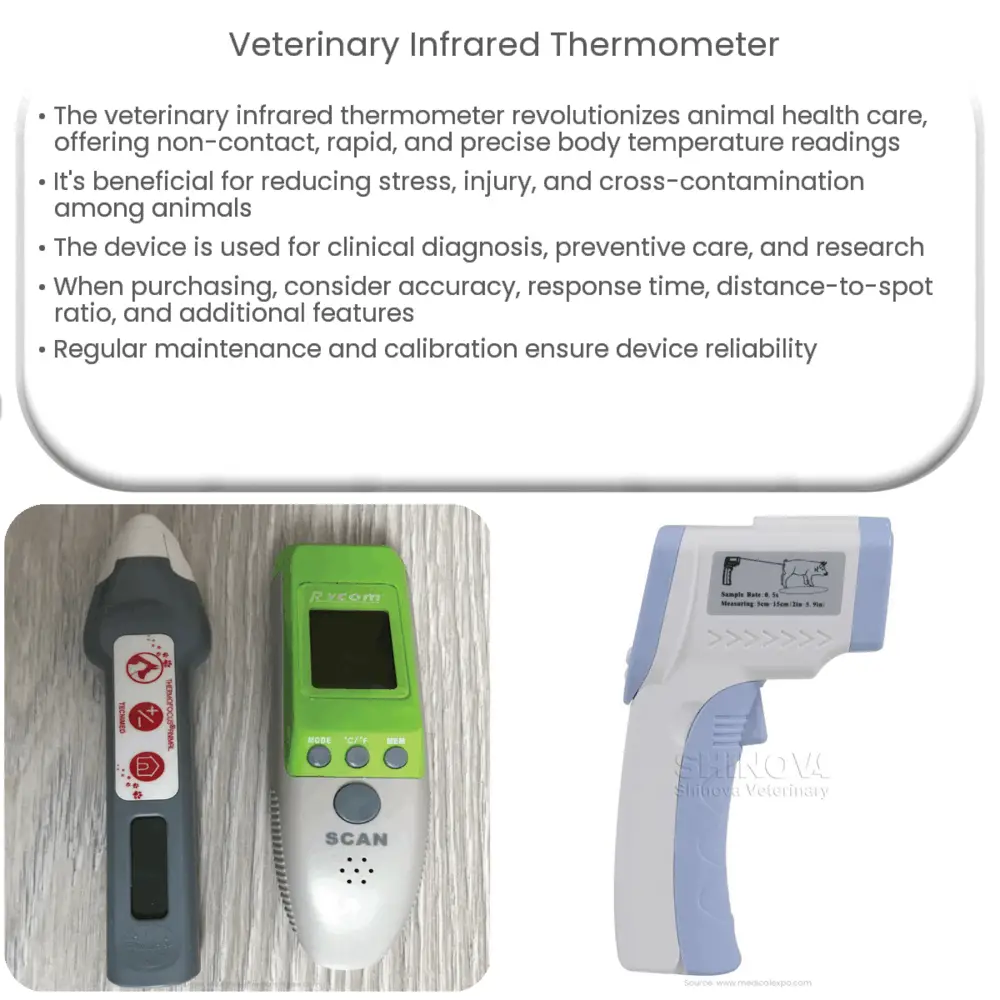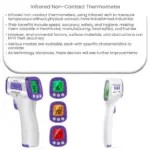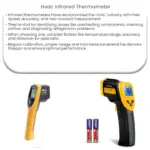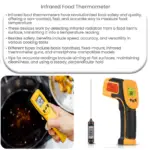The veterinary infrared thermometer offers quick, accurate, and non-invasive temperature measurements for animals, revolutionizing health care.

Veterinary Infrared Thermometer: A Revolution in Animal Health Care
Introduction
The veterinary infrared thermometer is a cutting-edge technology that has transformed the way veterinarians and animal caretakers monitor the health of animals. This non-contact, rapid, and accurate device has become an essential tool in the world of animal health care. In this article, we will delve into the benefits of using a veterinary infrared thermometer and discuss how it has made a significant impact in the field.
What is a Veterinary Infrared Thermometer?
A veterinary infrared thermometer is a specialized tool designed to measure the body temperature of animals quickly and accurately without the need for direct contact. It employs infrared technology to detect the heat emitted by an animal’s body, which is then converted into a temperature reading. This non-invasive technique is particularly advantageous when working with animals, as it eliminates the discomfort and stress associated with traditional temperature-taking methods, such as rectal thermometers.
Benefits of Using a Veterinary Infrared Thermometer
There are numerous advantages to using a veterinary infrared thermometer, including:
- Non-contact: The main benefit of an infrared thermometer is that it does not require direct contact with the animal. This reduces the risk of injury, stress, and cross-contamination between animals.
- Speed: Infrared thermometers provide instant temperature readings, allowing for efficient and timely health assessments. This is particularly helpful when working with large numbers of animals, such as in a veterinary clinic or on a farm.
- Accuracy: Veterinary infrared thermometers are designed to deliver precise temperature measurements, ensuring reliable and consistent data for veterinarians and animal caretakers.
- Versatility: These thermometers can be used on a wide variety of animals, from small pets to large livestock, making them a valuable tool for any animal health care professional.
- Ease of use: Infrared thermometers are simple to operate, with user-friendly interfaces and clear displays for straightforward temperature readings.
Applications of Veterinary Infrared Thermometers
Veterinary infrared thermometers are used in various settings and for a multitude of purposes, such as:
- Clinical diagnosis: Monitoring body temperature is a crucial aspect of diagnosing and managing many health conditions in animals. Veterinarians can use infrared thermometers to efficiently screen animals for fever, infection, or inflammation.
- Preventive care: Regular temperature checks can help identify potential health issues before they become more serious, allowing for early intervention and better health outcomes for animals.
- Research: Infrared thermometers are valuable tools in scientific research involving animals, as they provide accurate and consistent temperature measurements with minimal disruption to the subjects.
Choosing the Right Veterinary Infrared Thermometer
When selecting a veterinary infrared thermometer, it’s important to consider the following factors:
- Accuracy: Look for a device with a high level of accuracy, typically within ±0.5°F (±0.3°C), to ensure reliable temperature measurements.
- Response time: Choose a thermometer with a rapid response time, ideally within one second or less, to allow for efficient temperature readings.
- Distance-to-spot ratio: The distance-to-spot ratio (D:S) indicates the size of the area being measured in relation to the distance from the thermometer. A higher D:S ratio allows for more accurate measurements from a greater distance, which is particularly useful when working with large or aggressive animals.
- Emissivity: Emissivity is a measure of an object’s ability to emit infrared energy. A thermometer with adjustable emissivity settings can provide more accurate readings on different surfaces, such as fur, skin, or scales.
- Additional features: Consider devices with extra features, such as memory functions to store previous readings, backlit displays for use in low-light conditions, or audible alerts for high or low temperature readings.
Maintaining and Calibrating Your Veterinary Infrared Thermometer
To ensure the ongoing accuracy and reliability of your veterinary infrared thermometer, it’s important to follow proper maintenance and calibration procedures:
- Cleaning: Keep the thermometer’s lens and housing clean by wiping them gently with a soft cloth or lens tissue. Avoid using harsh chemicals or abrasive materials, as they may damage the device.
- Storage: Store your thermometer in a cool, dry place, away from direct sunlight and extreme temperatures. Most devices come with a protective case, which is ideal for storage and transport.
- Calibration: Regular calibration is essential to maintain the accuracy of your thermometer. Many manufacturers recommend annual calibration, but consult your device’s user manual for specific guidelines. Calibration services are typically available through the manufacturer or accredited calibration laboratories.
Conclusion
The veterinary infrared thermometer has revolutionized animal health care, providing a fast, accurate, and non-invasive method for measuring body temperature in animals. With its numerous benefits and wide range of applications, this innovative tool has become an indispensable resource for veterinarians, animal caretakers, and researchers alike. By choosing the right device and following proper maintenance and calibration procedures, you can ensure that your veterinary infrared thermometer remains a valuable asset in your animal health care toolkit.




